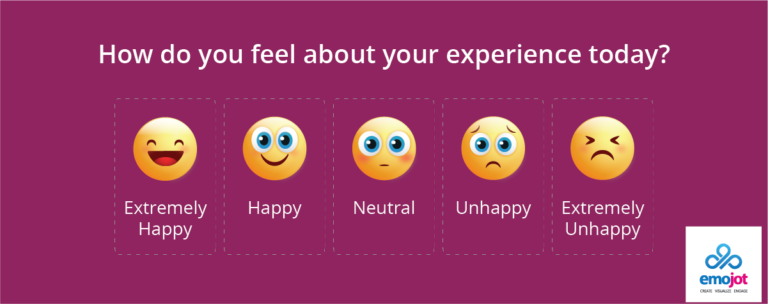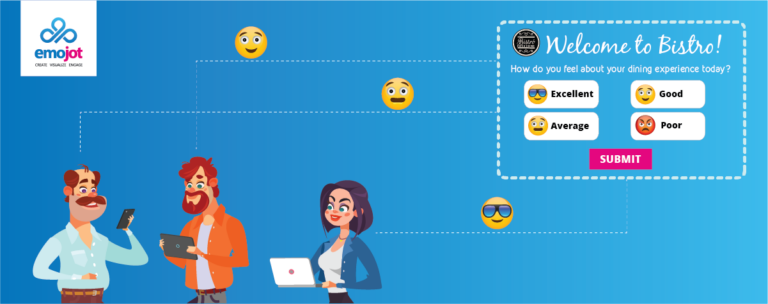
With the acceleration of advanced technology in the world today, the field of patient experience has exploded. As population health efforts grow rapidly, efforts to engage patients about their own healthcare services have become a very popular concept. However, these two concepts – patient experience and engagement – seem disconnected. Although some healthcare professionals talk about engagement in health, they don’t improvise the essential experience of it. Yes, some of them do talk about patient experience but they sometimes forget to focus on an engagement mechanism that’s highly effective. What we refer to here is patient engagement that would help them focus on a faster decision-making strategy that would prove as a positive outcome in terms of the services they provide. If an effective decision-making strategy is not in place, it limits their improvisation scope that won’t help them realize their full potential as a healthcare professional. To solve the disconnection between patient experience and engagement levels, technology vendors have come into the picture to create intelligent, empathetic solutions. With an influx of solutions to pick from, it all boil downs to picking a best-suited technology platform that would act as a foundation to reinforce excellence and help healthcare professionals improve services as and when it is required. So, what kind of solution can really help you eradicate the experience-engagement disconnect? Essentially, it’s a solution that follows an effective customer engagement methodology that would primarily act as the voice of patients (your customers) – across all your departments. Wouldn’t it be great if you could understand how your patients felt every time they pay you a visit? Or, wouldn’t it be greater if they tell you what you’re doing wrong, what you’re doing right and suggest on how you can make things right? We believe that Emojot’ voice of customer […]

Wouldn’t it be great if technology could help your organization understand your customers’ feelings and step in to give you insights on which problem needs fixing, prevent you from doing something that’s not beneficial and point out the return on investment on what you’re doing right? Imagine yourself when a deadline is drawing near, and your software keeps giving you a tough time. Or, maybe you’re upset at your immediate boss and struggle to tell him/her how you feel about his treatment towards you. Imagine yourself when your customers complain about your products/services on social media and destroy the brand image you have built up over the years? It’s an awful experience to go through isn’t it? This is where emotionally aware systems can step in and play a vital role to your brand/organization. Be it your customers, your employees or your target audiences – they need to be understood, at any given point in time. Why, you may wonder? Understanding these segments will certainly become more valuable to your business at each step of a predictable “emotional pathway” as they can transition from being unconnected to being highly satisfied to perceiving brand differentiation to being fully connected. To get to one transitioning point to the other, it is important to engage with your customers to know how they truly feel and connect with them thereafter by acting on what’s necessary. You must know that, connected customers are bound to define the success or failure of your business. To perform this task easily, our platform uses a visual survey mechanism that can be used in a simplified manner to capture emotions of the voice of customers, voice of employees or voice of audiences. Why use a visual survey mechanism? It’s simply because we are visual creatures and 30% of our […]

With the advancement of technology, a multitude of organizations across the globe have access to more data than ever before. This influx of data leads to a blind-sighted organizational approach. Organizational success cannot be achieved by simply a ‘more data’ factor. Instead, it can only be achieved by using the ‘right data’ at the ‘right time’. By using this approach, data is converted into ‘experience data’ to best-suit your organizational needs. Keeping this approach in mind we developed a new imperative –Emojot – a platform that uses Emotion Sensors™ to capture customer experience data coupled with versatile back-end capabilities to track and manage the data gathered. In layman terms we refer to it as translating human emotions/feelings/expressions into sentiment data that is bound to be useful for all businesses spanning across different industries. Then & Now If you look back in time, traditional surveys have been the most straightforward method in capturing customer experiences merely due to the low accuracy rates achieved in terms of alternate experience tracking technologies. And to add to that, the opt-in rates have been reported extremely low for traditional surveys – a sad reality. However, with Emojot’ survey methodology of using an array of gamification techniques coupled with emojis/pictograms makes engagement simple and fun – convincing your customers/employees/audiences want to engage with you, more than ever before. Compared to traditional surveys, Emojot’ customer journey orchestration feature allows you to ask the right questions, at the right time – a dire need of any business during this day and age that has an exceedingly high competitive landscape. It Doesn’t Just Stop There The platform also includes a very powerful, built-in ‘Business Hierarchy’ feature that helps businesses map out their existing hierarchies when modelling experience data. For example, watermarking real-time customer experience data, of different rooftops of any […]

The restaurant industry is a high-risk business proposition. With the influx of competition working their way up the ladder of success, you are expected to perfect your restaurant offerings and services – for your guests as well as your employees. The key to success is to focus on customer engagement initiatives that facilitate keeping in touch with your guests, understanding their restaurant experiences, and encouraging them to increase the frequency of their visits. Did you know that 60% of businesses fail in the first year? There is a lot at stake here. To outrun your competition, how would you ensure your restaurant’s success? For starters, understand the pain points faced by your Restaurant? Do you: find it difficult to understand your customers’ journey, build a good rapport with them or retain them? struggle to obtain customer information and implement a successful loyalty program? fail to incentivize your employees in order to motivate them and increase their productivity levels? feel like your personalization strategies are limited and add no value to the customer conversations you are trying to invest in? feel like you are unable to keep up with technological advancements that have revolutionized solely for customer engagement? Secondly, understand the importance of customer experience (CX) initiatives. Customer experience (CX) initiatives provide an outside-in view of the customer experience. Without these initiatives, it is difficult to, understand the customer journey, quantify customer sentiment and perceptions, Identify improvement opportunities, and, measure the impact of customer experience initiatives. If these initiatives are implemented accurately, your restaurant will generate: 69% increased loyalty 68% increased sales 67% increased referrals Thirdly, understand the criteria for selecting a customer experience management platform (it should essentially address your pain points) Find the right partner to help act on your strategy to drive guest conversions and retention into revenue. […]

Corporate executives often spend so much time mulling over figures, stressing over projections, and brainstorming with strategists that they forget the single most valuable source of information they have when it comes to expanding their enterprises: their customers. Especially during difficult times, ignoring your current clients’ feelings and opinions could be catastrophic for your company. Your existing patrons are a font of knowledge when it comes to your branding, products, design, customer service, and more. VOC, or “voice of consumer” technology captures this precious data and provides it to your company so you can act on it. Emojot’s platform has made great strides forward in the already cutting-edge world of VOC by adding our unique twist on this technology. Rather than asking dull, textual survey questions that customers are likely to send straight to their spam folder or pestering them to provide their opinions over the phone, Emojot has devised short, sweet, state-of-the-art “Emotion Sensors™.” These unique surveys ask customers to share their feelings the way most of us have become accustomed to in this digital day and age: with whimsical, graphic, and powerfully expressive emojis! Our Emotion Sensors™ encourage engagement and give customers an outlet to easily share the emotions that drive their purchasing decisions.[emojot type = “button” size=”small” key=”59b64d52de4358b90f039047″ id=”59b64d50a430d8b91b542843_5a2a4d5771cb563c4ad7bf65″] Emojot’s Emotion Sensors™ has an astounding track record of proven success around the world, but this exceptional platform is still relatively new. We are confident that our VOC products will forever change the corporate world. Just imagine what kinds of disasters could have been avoided if more companies had known about these charming, interactive surveys and used the vast, valuable data collected wisely! That’s precisely what we’ve done in the following blog. Read on to find out how the history of the three companies could have been completely […]

If you own or run an enterprise, you know that your customers are the bedrock of your business. The way they think and feel about your brand color every choice they make. Every time you design a new product, release an improved service, mock up an advertisement, write a press release, call a client, ship an order, or perform numerous other vital actions, you influence your customers’ perception of your brand. Of course, with this in mind, maintaining good relationships with your clients can start to seem monumentally overwhelming. Taking on this aspect of your business might leave you with more questions than answers. What if your customers don’t like your new website design? How would they feel if you raised your prices slightly? Why didn’t they respond to the commercial you painstakingly filmed? Fortunately, there are twenty-first century tools you can use to answer these very questions and tackle this particular part of modern business. This is where Customer Experience Management comes into play. Today’s advanced technology can help you understand, foster relationships with, and, ultimately, profit from your customers better than ever before. Emojot’s products are at the cutting edge of this growing field. In the following blog, we introduce you to Customer Experience Management and explain our outstanding offerings in this area. What is Customer Experience Management? You may have heard the term “Customer Experience Management” thrown around online or at conferences, but if you don’t understand it’s full definition, then it will mean little more to you than a collection of buzzwords. Customer Experience Management actually has quite a precise meaning, as defined by Tech Target: “Customer experience management (CEM or CXM) is the collection of processes a company uses to track, oversee, and organize every interaction between a customer and the organization throughout the customer […]

We are all aware of the accusations made by Stormy Daniels to Donald Trump. Daniels is an adult-film actress who was on the radar of several mainstream news outlets in the initial days of the presidential campaign. During this period reporters from ABC, Fox News, the Daily Beast and Slate.com pursued a potentially explosive story stating that Daniels had allegedly had an affair with Trump in 2006, only a couple months after Trump’s wife, Melania, had given birth to their son, Barron. Daniel’s story included multiple sexual assault allegations against Trump and the controversy over his vulgar remarks on the “Access Hollywood” video. However, no one really went with the story. Why exactly wasn’t the story reported at the presidential election time. Was it because it could have possibly intensified questions surrounding his character before the public gave in their vote? Although the news has gone completely viral, the White House has denied that this affair existed. To add to that, Daniels made a statement on how Trump’s attorney Michael Cohen had created a limited liability company to pay Daniels $130,000 ahead of the 2016 presidential election as part of a “hush agreement” to keep quiet about the alleged affair with Trump. Daniels also stated that she was forced to sign the document and her legal team including her attorney Michael Avenatti said that the agreement is invalid as it was never signed by Trump. With the White House refusing to answer if Trump was aware of porn star payment, are they trying to cover Trump’s tracks or are they trying to avoid a falsified statement made by Daniels? And the latest on this news trail would be the fact that Daniels’ attorney Avenatti has filed a motion in federal court seeking to depose Trump and Cohen to inquire about […]







